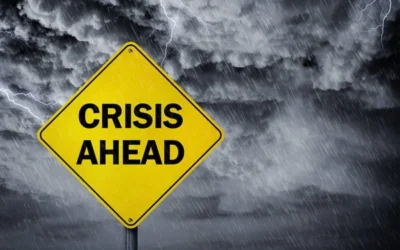In the world of Public Relations (PR), crisis management is an essential skill. It’s not a matter of if a crisis will happen, but when. Every organization, no matter how large or small, is vulnerable to unexpected events that can damage its reputation.
Effective crisis management involves preparing for the worst-case scenario and responding quickly and efficiently to mitigate the impact. At the heart of successful crisis management is a well-thought-out plan. This plan should be designed to protect your organization’s reputation and ensure your stakeholders remain informed and confident in your actions.
“By failing to prepare, you are preparing to fail.” – Benjamin Franklin
To guide you through the process, here are key steps to crafting an effective crisis management plan:
- Identify Potential Threats: Conduct a risk assessment to pinpoint possible crises that could impact your business.
- Establish a Crisis Management Team: Designate specific roles and responsibilities to ensure swift action during a crisis.
- Create Communication Protocols: Develop clear guidelines for internal and external communications.
- Formulate Key Messages: Pre-prepare messages that can be quickly adapted to fit various crisis scenarios.
- Train Your Team: Conduct regular crisis simulations to ensure everyone knows their role in an actual event.
- Monitor and Adjust: Keep an eye on the situation and be ready to make the necessary adjustments to your strategy.
Proactively addressing a crisis can save your company’s reputation and bottom line. The journey doesn’t stop at preparing and responding; recovery is just as crucial.
“In times of crisis, how you respond can define your organization’s future. The right preparation not only minimizes damage but can also build stronger connections with your stakeholders.” — Jonathan Beaton
To effectively manage a crisis, it’s essential to have a robust crisis communication plan in place. Preplanning your crisis communication can substantially increase your chances of overcoming public relations challenges. Crafting potential statements in advance allows you to respond quickly and decisively, a critical factor when every minute counts.
The role of a PR practitioner during a crisis is undoubtedly multifaceted and pivotal. They are the frontline defense and the conduit of information between the organization and the public. Prioritizing internal communications ensures that your team is informed, aligned, and ready to address any challenges head-on. This proactive approach not only helps in managing the crisis but also safeguards the well-being and morale of your employees.
One of the cornerstones of effective crisis communication is training your leadership team. By equipping them with specialized skills from communication experts, you can reduce response times, avoid misinformation, and convey confidence. This, in turn, enables your organization to not only withstand the crisis but also emerge stronger from it.
It’s also important to anticipate the unexpected. While you can’t predict every scenario, preparing for a variety of potential crises ensures that your team isn’t caught off guard. This preparation covers three critical phases: preparing beforehand, responding effectively during the crisis, and recovering to build resilience post-crisis. Each phase is integral to sustaining your organization’s reputation and operational stability.
By building trust with your stakeholders before a crisis occurs, you lay the groundwork for a more positive reception and support during trying times. Trust is an invaluable asset, one that, if handled with care, can turn a moment of potential disaster into an opportunity for demonstrating your organization’s competence and integrity.
In conclusion, while a crisis can be daunting, having a structured and well-thought-out plan allows you to navigate the turbulent waters more effectively. By addressing both internal and external communications, planning for the unexpected, and equipping your leadership with the right tools, you position your organization to not just survive a crisis but thrive beyond it.
Restoring Order and Building Resilience
After the initial shockwave of a crisis, it’s essential to focus on bouncing back stronger. Here’s how you can effectively manage the recovery phase:
- Debrief and Analyze: Conduct a thorough debrief with your crisis management team. Review what worked, what didn’t, and identify areas for improvement.
- Communication Post-Crisis: Maintain transparency with your stakeholders. Inform them about the steps you’re taking to resolve the issue and prevent future occurrences.
- Rebuild Trust: Reassure your audience and stakeholders by highlighting the proactive measures you’ve implemented. Show them that you’re committed to their well-being and satisfaction.
- Update Crisis Plans: Based on your debrief, update your crisis communication plan to reflect new learnings. This ensures you’re better prepared for any future upheavals.
- Support Your Team: Offer support and resources to your employees. Recognize their efforts during the crisis and provide any additional training they might need.
- Public Relations Campaign: Launch a positive PR campaign to rebuild your brand’s image. Share success stories, community involvement, or any other positive initiatives.
Remember, effective crisis management is an ongoing process. By continuously refining your strategies and learning from each experience, you’ll fortify your organization’s resilience and maintain a trusted reputation.
This process involves several key steps. First, prioritize internal communications. Keeping your employees informed not only builds trust but also ensures everyone is on the same page. Share updates regularly and provide clear instructions on how they should respond to inquiries from external parties.
Next, stick to best practices in crisis communication. Create messages that are honest, transparent, consistent, and delivered swiftly by an authorized spokesperson. This uniform approach prevents mixed messages and fosters confidence both within and outside the organization.
Finally, focus on recovery and building resilience. Conduct post-crisis evaluations to gather feedback and analyze the effectiveness of your communication. This reflection helps identify areas of improvement and strengths to build upon. Develop a recovery roadmap that incorporates insights and lessons learned from employees to guide your future strategies.
Remember, resilience isn’t just about bouncing back—it’s about bouncing forward with new knowledge and improved strategies. Embrace continuous learning and proactive planning to turn crises into opportunities for growth.




